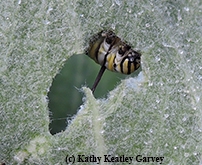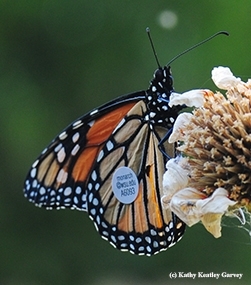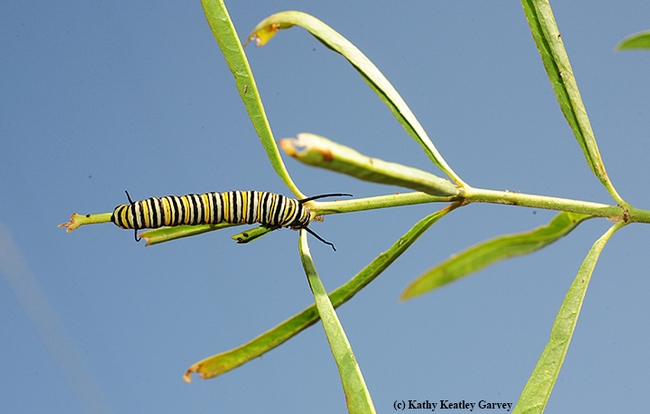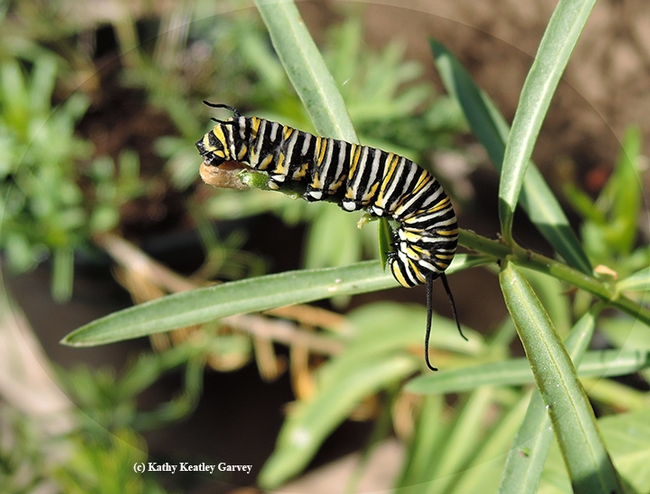
Monarch butterflies are migrating now, but we're still finding a few caterpillars in our pollinator garden in Vacaville, Calif.
We recently plucked off five caterpillars from our milkweed plants (our game plan is protect them from California scrub jays and other birds, tachinid flies, wasps and the protozoan parasite, Ophryocystis elektroscirrha or OE, for short).
These are the last 'cats of the season.
Ours is a small-scale conservation project. Our goal is to reach 50 by the end of the season. We're on track to do our small part for the declining monarch population. Plant milkweed (the host plant of monarchs), plant nectar-rich flowers such as Mexican sunflower (Tithonia), butterfly bush (Buddleia) and Lantana, and Danaus plexippus will come.

https://news.wsu.edu/2016/10/03/southbound-stopover-monarch-butterfly-big-surprise/
Weiford works inside the French Administration Building, named for former president C. Clement French. When I joined the Daily Evergreen news staff--way back when!--I used to interview Dr. French.
Small world.
And it became even smaller when the WSU-tagged monarch (monarch@wsu.edu), part of WSU entomologist David James' research program, stopped by for a visit. It was reared by citizen scientist Steve Johnson of Ashland, and tagged and released on Sunday, Aug. 28. "So, assuming it didn't travel much on the day you saw it, it flew 285 miles in 7 days or about 40.7 miles per day," James said. "Pretty amazing."
Yes, pretty amazing, indeed.
Now, with any luck--well, lots of luck--Steve Johnson's progeny has made its way to an overwintering colony in Santa Cruz or Pacific Grove.
And with any more luck, we'll be adding five more to the overwintering site.
Attached Images:

A monarch caterpillar outlined against the blue sky in Vacaville, Calif. (Photo by Kathy Keatley Garvey)

A monarch caterpillar making the most of it on a broadleaf milkweed, Asclepias speciosa, in Vacaville, Calif. (Photo by Kathy Keatley Garvey)

Some of the monarch caterpillars are darker than others. (Photo by Kathy Keatley Garvey)